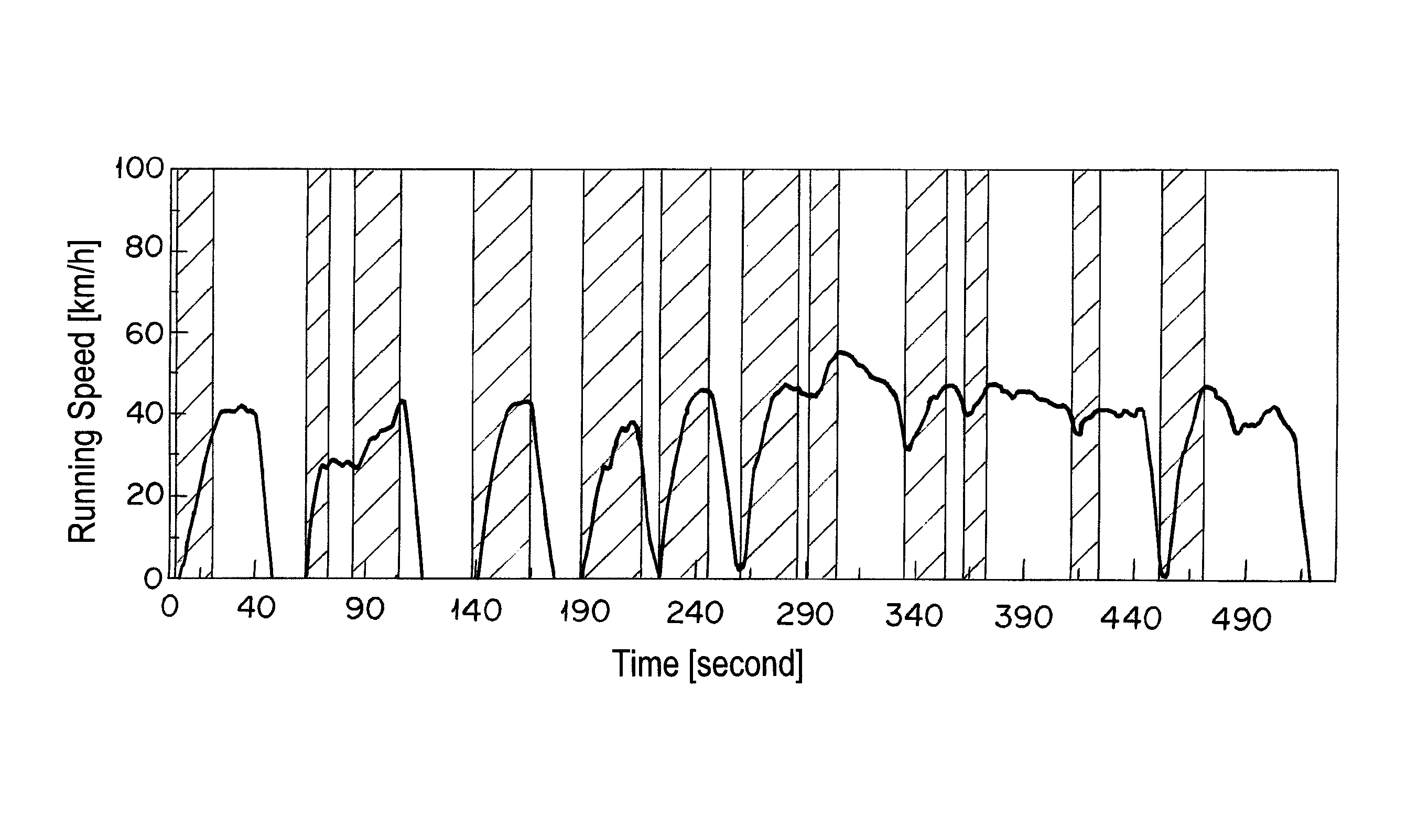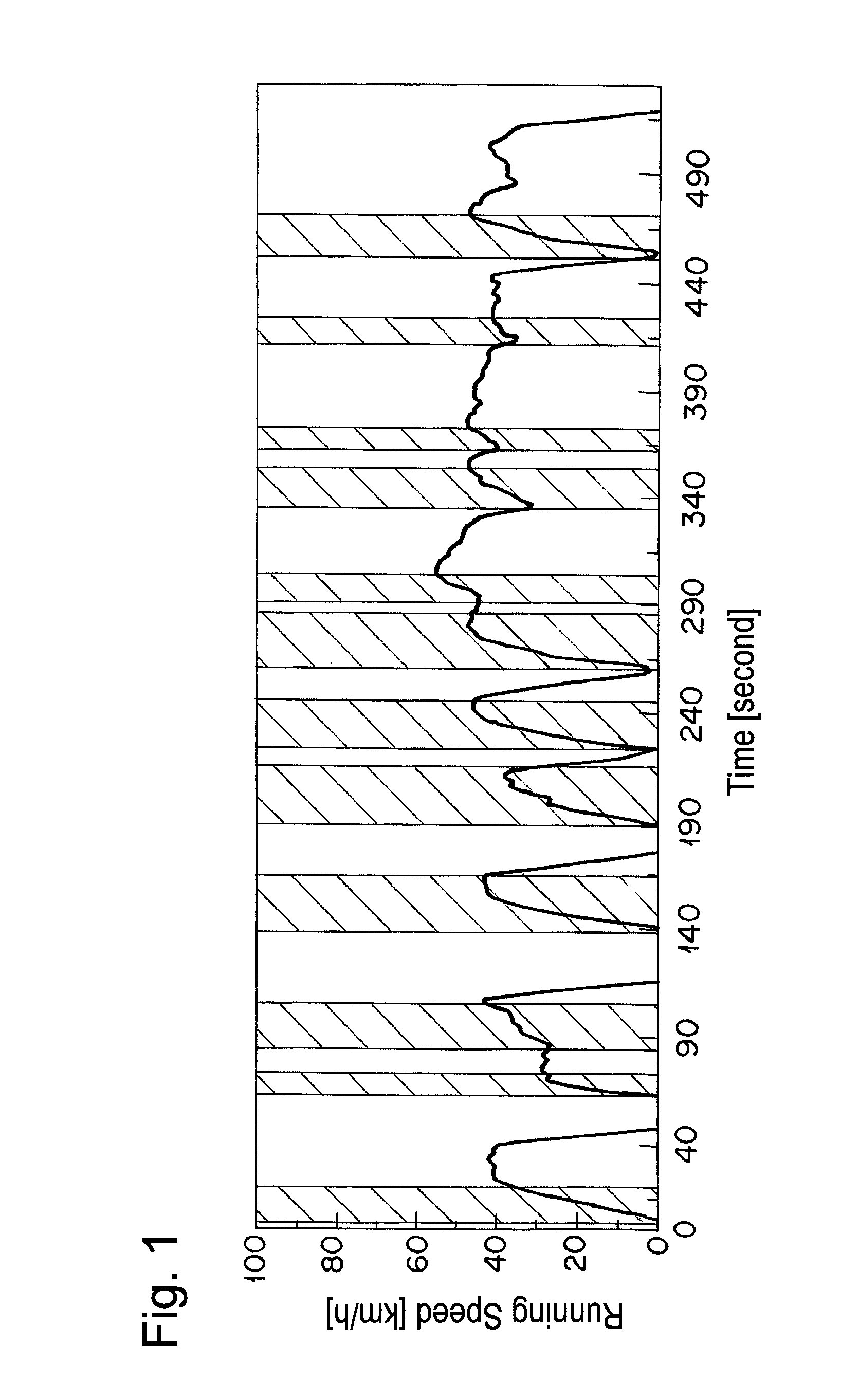Catalyst for purifying exhaust gas from internal combustion engine and process for purifying exhaust gas using the same
a technology of catalyst and exhaust gas, which is applied in the direction of metal/metal-oxide/metal-hydroxide catalyst, machine/engine, etc., can solve the problems of large amount of reducing hydrocarbon supplied to fuel, difficulty in combustion of hydrocarbon, and small amount of oxygen required for burning hydrocarbon. , to achieve the effect of high combustion activity
- Summary
- Abstract
- Description
- Claims
- Application Information
AI Technical Summary
Benefits of technology
Problems solved by technology
Method used
Image
Examples
example 1
[0062]Using palladium nitrate as a source material for palladium and magnesium oxide as a source material for magnesium, respectively, an aqueous mixed solution of palladium (in terms of palladium), magnesium (in terms of magnesium oxide) and alumina in a weight ratio of palladium:magnesium oxide:alumina=1.25:50:30 was prepared, and wet-milled in a ball mill, to yield a slurry. Then, the slurry was coated on a cordierite with a diameter of 24 mm, a length of 47 mm, and a volume of 0.021 L, dried at 200° C. for 5 min, and calcined at 500° C. for 1 hour in air, to yield a catalyst A having 81.25 g of catalyst active components supported per 1 L of cordierite. As reduced to palladium oxide (PdO), the composition of the catalyst A is as follows: palladium oxide (PdO):magnesium oxide (MgO):alumina=1.44:50:30 (weight ratio).
[0063]The catalyst A was tested for the proportion of palladium having each surface charge by X-ray photoelectron spectroscopy (XPS). The results are shown in Table 1....
example 2
[0068]The catalyst A prepared in Example 1 was calcined at 950° C. for 50 hours in air and filled in a reaction tube. A simulation gas consisted of 200 ppm of NO, 4.7% of CO, 2% of O2, 880 vol-ppm of C3H8 (in terms of methane), 3520 vol-ppm of C3H6 (in terms of methane), 6% by volume of CO2, 7% by volume of H2O, and the balance of nitrogen was supplied thereto at a space velocity (S.V.) of 94,000 h−1. An A / F value was 13.3. The A / F value was calculated according to the formula described in SAE PAPER 650507. Then, only C3H8 and C3H6 were excluded from the simulation gas, and the rest of the gas was supplied to the catalyst A. Thereafter, the reaction tube was heated so as to give the temperature at the catalyst inlet of 260° C. When the temperature of the catalyst inlet was stabilized at 260° C., 880 vol-ppm of C3H8 (in terms of methane) and 3520 vol-ppm of C3H6 (in terms of methane) were supplied to the catalyst A. After 10 min from the start of gas supply, the concentration of hydr...
example 3
[0072]Using palladium nitrate as a source material for palladium and magnesium hydroxide as a source material for magnesium, an aqueous mixed solution of palladium (in terms of palladium oxide (PdO)), magnesium (in terms of magnesium oxide (MgO)) and alumina in a weight ratio of palladium oxide:magnesium oxide:alumina=5.06:20:80 was prepared, and wet-milled in a ball mill, to yield a slurry. As reduced to palladium oxide (Pd), the composition of the catalyst A is as follows: palladium (Pd):magnesium oxide (MgO):alumina=4.4:20:80 (weight ratio). Then, the slurry was coated on a cordierite with a diameter of 24 mm, a length of 47 mm, and a volume of 0.021 L, dried at 200° C. for 5 min, and calcined at 500° C. for 1 hour in air, to yield a catalyst C having 105.06 g of catalyst active components supported per 1 L of cordierite. The catalyst C was tested for the proportion of palladium having each surface charge by a similar method as in Example 1, to find that a higher proportion of pa...
PUM
| Property | Measurement | Unit |
|---|---|---|
| speed | aaaaa | aaaaa |
| particle size | aaaaa | aaaaa |
| particle size | aaaaa | aaaaa |
Abstract
Description
Claims
Application Information
 Login to View More
Login to View More - R&D
- Intellectual Property
- Life Sciences
- Materials
- Tech Scout
- Unparalleled Data Quality
- Higher Quality Content
- 60% Fewer Hallucinations
Browse by: Latest US Patents, China's latest patents, Technical Efficacy Thesaurus, Application Domain, Technology Topic, Popular Technical Reports.
© 2025 PatSnap. All rights reserved.Legal|Privacy policy|Modern Slavery Act Transparency Statement|Sitemap|About US| Contact US: help@patsnap.com



